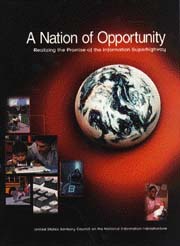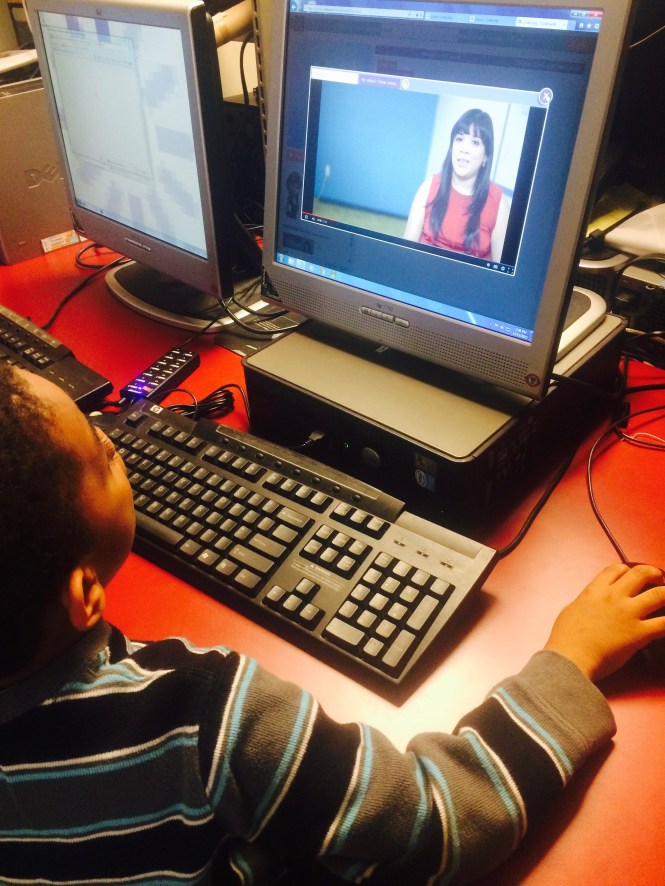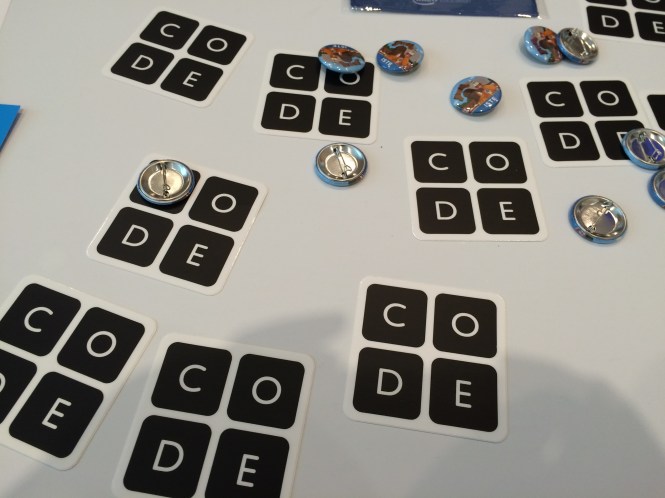Excerpt by Larry Irving /Fast Forward by Bonnie Sutton

The day America married the Internet
In 1993, the Internet was the province almost exclusively of scientists and hobbyists, with only about 2 million users worldwide. U.S. President Bill Clinton and Vice President Al Gore saw huge potential in connecting all of the United States to the Internet.
They believed that a robust Internet would provide immeasurable benefits to the U.S. economy, would create jobs and would improve the provision of critical services to the American public, including education, healthcare, library services, public safety and government information and data.
As importantly, they believed that the Internet could spur needed private-sector investment and innovation in both the underlying infrastructure and in the platforms, applications and services that would ride on that infrastructure.
They were right on all counts.

The vision
“Imagine you had a device that combined a telephone, a TV, a camcorder and a personal computer. No matter where you went or what time it was, your child could see you and talk to you, you could watch a replay of your team’s last game, you could browse the latest additions to the library, or you could find the best prices in town on groceries, furniture, clothes — whatever you needed.”
The above paragraph was the opening paragraph of the Agenda for Action — 20 years ago. It was an eerily accurate vision of a then-distant future. Sometimes having a coherent vision helps propel progress. The administration knew where it wanted to go and knew it needed a plan to drive the progress required to get there.
The plan
The Agenda for Action laid out a series of principles and proposed actions to support them. Virtually all of those principles remain the cornerstones of the United States’ domestic and international technology policies today.
The Agenda for Action stated a strong preference for private-sector development and deployment of the Internet. The administration felt it important to state that preference clearly and unequivocally because of fears that the government would attempt to build the Information Superhighway using public dollars.
In light of the U.S. government’s efforts at that time to encourage increased investment in our domestic infrastructure and to promote privatization of telecommunications networks abroad, the administration clarified its preference for private-sector investment to build the Internet, supported by tax and regulatory policies that would promote an investment-friendly environment.
The Agenda for Action presaged virtually every major policy debate surrounding the Internet and delineated a comprehensive policy approach that protected the rights of consumers while also providing increased certainty for industry and innovators by calling for the following: extending our historic commitment to universal service to the Internet; seamless, interactive user-driven operation of the Internet; information security and network reliability; improved management of wireless spectrum; protection of Intellectual property rights; and increased coordination with state and local governments and with other nations to ensure that the Internet would be fully global.
Looking back today, President Clinton and Vice President Gore got much right. Their vision for the Internet was realized more quickly and more completely than any of us had any right to expect.
Reading the Agenda for Action today, the administration accurately predicted the power of the Internet to increase access to information and to be a key economic driver. As importantly, the administration provided a forward looking and flexible policy template that would underscore the growth of the internet over the following decades.
The astonishing growth of the Internet in the mid-1990s was driven in large part by the innovation, talent, ingenuity and passion of many in the private sector, principally the Internet pioneers in Silicon Valley and other creative centers, as well as the Internet service providers who built the physical networks.
It is unlikely that the Internet’s growth would have been as explosive or that we would have seen as much early acceptance and adoption domestically and internationally without the administration’s leadership and use of the bully pulpit to drive policy prescriptions and procurement efforts designed to support and encourage private-sector investment and innovation.
At a time of increased skepticism about the role of government and widespread derision of visionary leaders, it’s important to note that sometimes the government and its leaders get it right. The United States and the world is at another inflection point today as wireless technology, the Internet of Things, cloud computing, social networks and data analytics become drivers of economic and societal changes.
Revisiting or restating fundamental policy principles to ensure that they provide an environment that will promote investment while also protecting the rights of consumers would seem to be as necessary today as it was 20 years ago.

Advances in information technology (IT) are reshaped the U.S. labor market. The demand for workers who can read and understand complex material, think analytically, and use technology efficiently will continue to increase. Congress established the 21st Century Workforce Commission to assess current and future demand for IT workers and the education and training needed to fill IT jobs. By conducting field hearings and site visits and reviewing pertinent research, the commission identified nine keys to success that leaders at all levels can apply to build a highly skilled workforce prepared for high-technology job opportunities in the 21st century. The keys are as follows: (1) building 21st century literacy; (2) exercising leadership through partnerships; (3) forming learning linkages for youth; (4) identifying pathways to IT jobs; (5) increasing acquisition of IT skills; (6) expanding continuous learning; (7) shaping a flexible immigration policy for skilled IT workers; (8) raising student achievement; (9) and making technology access and Internet connectivity universal. During its work, the commission found many examples of how stakeholders at all levels exerted the leadership to put the keys into practice. (Ten tables/figures are included. Concluding the report are a list of the commission members and 85 endnotes.) (MN)
Fast Forward 2016 Are We A Nation of Opportunity for All? Not Yet!!
We still need a plan to engage, inform, educate and create possibilities for all communities.
In the Digital Age, Digital Equity is an Essential

NCDE Puts forward an Action Plan
We are , in America still trying to solve the problem of the Digital Divide. EDC has allowed us to have a solution. Not to talk about the latest tool, or gadget or even coding.
HOW DO WE SOLVE THE DIGITAL DIVIDE?
Not in an hour to talk about problems, but a whole day to define, to work across communities , schools, libraries, businesses, teacher groups and government to find solutions and to learn from each other.
Dr. McLaughlin shared thoughts as a framework for our discussions
Principles for Designing and Evaluating Digital Equity Investments and Initiatives
They were well focused on achieving not only digital equity but also locally determined economic, educational and social impacts. fostering digital equity not just for its own sake but for its critical contributions to other more fundamental locally determined priorities for equity, social justice, and well-being.
Systemic- providing equitable( free or low cost) access to the full array of essential resources for digital inclusi0n, lifelong learning, workforce development and economic opportunity including:

-broadband
-computing devices with keyboard ( and assistive devices for those with disabilities}
-multilingual tech support
-librarians skilled in guiding learners to high quality content and tools, keyed to their learning priorities
-low interest financing (or full subsidies) for gamilies with weak or no credit so that when devices are not free they can afford to finance them and still support their families
-educational and productivity apps and software
-open and “Deep Web”educational resources that are universally designed.
The initiative will publish, share videos and the outcome ideas of our Digital Equity Symposium

The National Coalition for Digital Equity will publish these in greater detail the outcomes of the symposium.















































